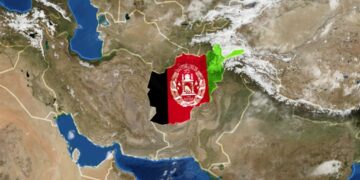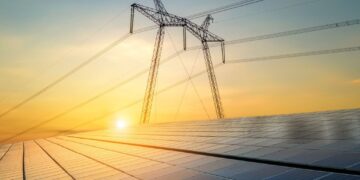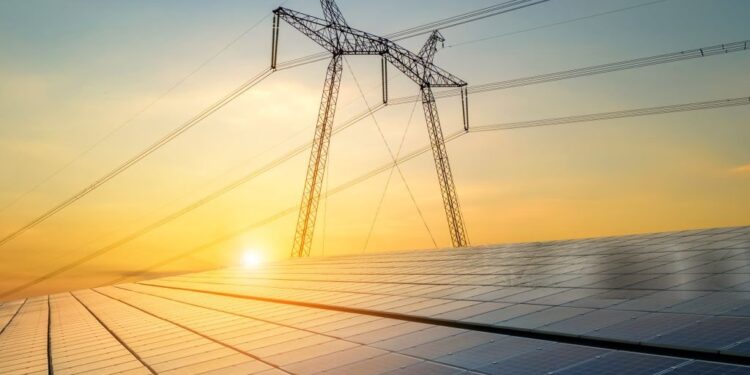Ijeoma R.C. 1
1Department of Electrical/Electronic Engineering Technology, Captain Elechi Amadi Polytechnic, Rumuola Port Harcourt, Nigeria
*Corresponding Author Email: richeal.ijeoma@portharcourtpoly.edu.ng, ijeomaricheal@gmail.com …
Highlights
- Emphasizes the shift from depleted conventional to abundant non-conventional energy sources.
- Highlights decentralized systems for efficient, localized renewable energy production and distribution.
- Notes solar, wind, and micro-hydro innovations expanding clean energy access in remote areas.
- Calls for addressing policy, funding, and technical barriers to achieve universal sustainable energy access.
Abstract
Non-conventional sources of energy include the sun, wind, hot springs, and others that support heat and power generation. They are non-polluting and present in abundance within the earth’s atmosphere. Conventional energy sources and non-conventional ones are vital resources for domestic and commercial consumption. However, the high growth of the population and the wastage of resources have depleted conventional sources. For this reason, non-conventional sources of energy are being developed and researched. A decentralized energy system is characterized by locating energy production facilities closer to the site of energy consumption, storage, and distribution and also allows for more optimal use of renewable energy as well as combined heat and power, reduces fossil fuel use and increases eco-efficiency. These systems reduce reliance on centralized grids, which are often inaccessible or unreliable in remote areas. Renewable energy technologies are game-changers in providing clean, sustainable, and affordable energy access. Solar Power Innovations: Solar energy is one of the most accessible forms of renewable energy due to its modularity and declining costs. Companies like M-KOPA in East Africa offer pay-as-you-go solar solutions, allowing households to pay for solar systems in small installments. This approach makes clean energy accessible to low-income families; Wind and Micro-Hydropower: Small-scale wind turbines and micro-hydro projects provide sustainable energy to remote areas with suitable natural conditions. Transformative energy innovations hold immense potential, and challenges like Policy Constraints, Funding Gaps, and Technical Barriers must be addressed to achieve universal energy access to uplifting communities worldwide. By prioritizing localized energy systems, adopting renewable technologies, enhancing energy efficiency, and fostering inclusive policies, we can create a world where energy access is not a privilege but a fundamental right.
Keywords: Decentralized Energy, Funding Gaps, M-KOPA, Power Generation, Renewable Energy, Transformative Energy.
1. Introduction
Electrical energy is essential for a country’s economic development, as it plays a crucial role in human life and ranks at the top of the energy hierarchy. (Ijeoma, 2024; Ijeoma & Nwauzi, 2019) highlight that millions of people worldwide lack access to reliable, affordable, and sustainable energy sources (IEA, 2017; IEA, 2022a). Addressing this challenge necessitates transformative energy practices and innovations that empower underserved communities while promoting environmental sustainability. This paper explores key energy innovations and practices that uplift communities globally, with a focus on decentralized energy systems, renewable energy technologies, energy-efficient practices, and inclusive policies. Energy systems are traditionally categorized into two types: conventional (finite and carbon-intensive) and non-conventional (renewable and sustainable) sources (Ijeoma & Nwauzi, 2019; REN21, 2023). Conventional energy sources are naturally occurring but are limited in quantity, whereas non-conventional sources are abundant and available in unlimited amounts.
1.1 Conventional Sources of Energy
Conventional energy sources occur naturally and have been utilized for many years (Gupta, 2016). These sources are employed for various purposes, including heating, lighting, cooking, operating machinery, and providing electricity. Common examples of conventional energy sources include firewood and fossil fuels. In remote regions of India, firewood has been particularly important for cooking. Fossil fuels, which are derived from the remains of ancient plants and animals buried in the Earth for millions of years, include primary energy sources like coal, petroleum, and natural gas. However, the reserves of these energy sources are limited and will soon be depleted due to the growing population. Since these energy sources are naturally occurring and take a significant amount of time to form, they cannot be replenished through manual or scientific methods. Therefore, it is crucial to use non-renewable or conventional energy sources judiciously.
1.2 Advantages of Conventional Energy Sources
- Easily Available: Conventional energy sources like coal, oil, and natural gas have been in use for decades, and vast infrastructure already exists to extract, transport, and use them. Most countries have easy access to these resources or established supply chains to import them.
- Efficient and Good Electricity Conversion: Thermal power plants that run on fossil fuels are capable of generating large amounts of electricity reliably. Over the years, the technology has improved, making it possible to convert fuel into electricity with relatively high efficiency compared to some renewable technologies.
- Low exploration costs: The methods for finding and tapping into conventional energy sources are well-developed and cost-effective, especially in known reserves. Unlike renewable sources, which may require complex site assessments (like wind or solar potential), conventional reserves are more straightforward to locate and utilize.
1.3 Disadvantages of Conventional Energy Sources
- Time-Consuming Collection Process: The process of extracting, processing, and transporting fossil fuels can be lengthy. Drilling for oil, mining coal, or refining petroleum all require significant time and labor, which can delay availability and increase operational complexity.
- Pollutes the Atmosphere: Burning fossil fuels releases harmful gases like carbon dioxide (CO₂), sulfur dioxide (SO₂), and nitrogen oxides (NOx). These contribute to air pollution, acid rain, and global warming, making conventional energy a major environmental concern.
- Destroys Natural Ecosystems: Mining and drilling operations can devastate ecosystems. Forests may be cleared, rivers redirected, and habitats destroyed. This can lead to loss of biodiversity and long-term environmental degradation.
- Displaces Local Communities: Large-scale energy projects often require land, sometimes taken from rural or indigenous communities. These people may be forced to relocate, losing their homes, land rights, and cultural ties, often without adequate compensation or support.
- Initial Set-up Could Be Costly: Establishing infrastructure for conventional energy such as coal-fired power plants, oil refineries, or natural gas pipelines requires significant capital investment. While the fuels themselves may be cheap or accessible, building and maintaining the systems to extract, process, and distribute them can be very expensive, especially in remote or undeveloped regions.
1.4 Non- Conventional Sources of Energy
Non- Conventional energy sources are the best alternatives to conventional sources while also non-polluting. In 1973, the oil crisis encouraged a focus on non – conventional sources, which has increased in recent times due to high environmental pollution
Non-conventional sources could be obtained from the sun, wind, hot springs, and others that support heat and power generation. They are non-polluting and present in abundance within the earth’s atmosphere.
1.4.1 Solar Energy
Solar energy harnesses sunlight to generate electricity by capturing it through solar cells within panels. This energy source is abundant, but it can only be captured during daylight hours when the sun’s rays are most intense. Solar energy is commonly used for applications such as lighting, heating, and more.
1.4.2 Wind Energy
Wind energy has been utilized for many years, traditionally for grinding grains in mills. In recent years, it has been increasingly used to generate electricity by harnessing wind power through turbines connected to large-capacity generators. Wind farms are typically located in areas with strong wind flow, such as coastal regions or mountains. In India, substantial wind farms have been established in desert areas, particularly in the outskirts of Gujarat and Rajasthan.
1.4.3 Nuclear Power Plants
Nuclear energy is derived from the nuclei of atoms found in naturally occurring radioactive materials such as uranium and thorium. When these nuclear fuels undergo fission in nuclear reactors, they release energy. Currently, the USA and Europe are the largest producers of nuclear power globally. In India, uranium is primarily located in Jharkhand, while thorium can be found in Kerala.
1.4.4 Geothermal Energy
Geothermal energy is the heat generated from the Earth’s interior. This form of energy is often observed in naturally occurring hot springs. The heat from within the Earth has been utilized for power generation. New Zealand, Iceland, Central America, and the USA are home to some of the largest geothermal power plants. Additionally, India has geothermal power plants located in Himachal Pradesh and Ladakh.
1.4.5 Tidal Energy
Tidal energy is generated from the movement of tidal waves, which is harnessed by constructing dams. These narrow dams are built at the tidal inlets, where turbines capture the energy of the ebb and flow of tides. India has significant tidal power infrastructure at the Gulf of Kachchh, while countries like Russia and France also utilize tidal energy systems.
1.5 Benefits of the Non-Conventional Source of Energy
These are advantages of energy sources like solar, wind, tidal, geothermal, and biomass:
- Non-polluting: They do not release harmful pollutants or greenhouse gases, making them environmentally friendly.
- Available in abundance: These resources like sunlight, wind, and water are naturally occurring and widely available on Earth.
- Freely available: Nature provides these sources without cost (e.g., solar energy from the sun, wind from the atmosphere).
- Low harnessing costs: Once the initial infrastructure (like solar panels or wind turbines) is set up, the cost to generate energy is relatively low.
- Low environmental damage: Compared to conventional sources like coal or oil, these energy forms have a much smaller ecological footprint.
1.6 Disadvantages of Non-Conventional Sources of Energy
Despite their advantages, these sources have some limitations:
- Seasonal or time-based limitations: Energy generation can depend on weather or natural cycles; for example, solar power is less effective on cloudy days, and tidal energy is dependent on tides and seasons.
- Not commercially viable in all areas: Some regions may lack the necessary natural conditions (like consistent wind or sunlight) or the infrastructure, making large-scale commercial use challenging.
- Lower efficiency levels: These sources generally produce less energy per unit compared to conventional fossil fuels, which can make them less efficient or require larger installations.
Table 1: Differences between Conventional and Non – conventional Sources of Energy

Conventional energy sources and non-conventional ones are vital resources for domestic and commercial consumption as seen in Table 1. However, the high growth of the population and the wastage of resources have depleted conventional sources. For this reason, non-conventional sources of energy are being developed and researched.
Meet et.al. (2025) explains that the global energy landscape is undergoing a profound transformation. Fossil fuels, which have been the primary source of energy for over a century, are increasingly seen as both unsustainable and harmful to the planet due to their role in driving climate change through the emission of greenhouse gases (GHGs). In response, renewable energy sources are solar, wind, hydropower, geothermal, and biomass, they are increasingly seen as essential for achieving a sustainable energy future. The imperative to transition from fossil fuels to renewable energy sources has never been more urgent. Renewable energy not only mitigates greenhouse gas emissions but also fosters economic development and energy security.
The integration of renewable energy into modern power systems presents both significant challenges and promising opportunities, especially as the world shifts towards sustainable energy solutions. Renewable sources like solar, wind, and hydropower play a crucial role in reducing carbon emissions and combating climate change. However, their variable and unpredictable nature creates challenges related to grid stability, reliability, and efficiency. This article examines the complexities involved in incorporating renewable energy, including issues of intermittency, infrastructure limitations, and economic and regulatory barriers. Fortunately, advancements in technology such as energy storage systems, smart grids, and demand response strategies—offer effective solutions to overcome these challenges, supporting a more resilient and sustainable energy future (IEA, 2022b).
Shivani (2024) investigates the capacity of renewable energy technologies to meet global energy demands while minimizing environmental impacts, focusing on primary sources such as solar, wind, hydropower, biomass, and geothermal energy. The study evaluates these technologies in terms of energy output, efficiency, economic feasibility, and carbon emission reductions. The findings highlight significant advancements in solar and wind energy, with efficiency improvements of 5% for solar photovoltaic’s and 10% for wind turbines, along with cost reductions of 67% and 64%, respectively, over the past decade (Shivani, 2024; IRENA, 2023a). Hydropower is noted as the most efficient renewable source, converting up to 90% of available energy, although its application is limited by geographic constraints (WEC, 2022). The study emphasizes environmental benefits, stating that hydropower and wind energy prevent approximately 250,000 and 120,000 metric tons of CO₂ emissions annually, respectively (EPA, 2023). However, challenges persist, including the intermittency of solar and wind power, higher costs associated with biomass and geothermal technologies, and regional disparities in infrastructure and implementation (Shivani, 2024; IRENA, 2023a).
2. Decentralized Energy Systems
A decentralized energy systems focuses on generating and distributing energy locally rather than relying on large, centralized power plants, and extensive grid networks (World Bank, 2020). Energy Equity is about ensuring that the benefits and burdens of energy policies, programs and technologies are fairly distributed and that the processes used to develop and implement them are inclusive and accessible. This approach is particularly impactful in regions with limited grid connectivity or unstable infrastructure.
A decentralized energy system is characterized by locating of energy production facilities closer to the site of energy consumption, storage, and distribution. A decentralized energy system allows for more optimal use of renewable energy as well as combined heat and power, reduces fossil fuel use and increases eco-efficiency. It’s also known as distributed energy systems. These systems reduce reliance on centralized grids, which are often inaccessible or unreliable in remote areas.
2.1 Mini-Grids
Mini-grids are localized electricity networks that operate independently (off-grid) or are connected to a main grid when available. These grids are powered by renewable sources like solar, wind, and biomass energy particularly effective in rural communities. For example, solar-powered mini-grids in Sub-Saharan Africa provide electricity for schools, clinics, and businesses, fostering economic and social development.
Case Study: In Tanzania, mini-grids powered by solar energy have transformed rural communities by providing electricity for lighting, refrigeration, and small businesses. This has reduced reliance on expensive and polluting diesel generators (World Bank, 2020).
2.2 Energy Cooperatives
Community-owned energy cooperatives enable residents to collectively manage and benefit from local energy resources. In countries like Germany and Denmark, energy cooperatives empower communities by providing a share of the revenue from renewable energy projects.
Example: In Denmark, over 60% of wind turbines are owned by local cooperatives. This not only democratizes energy ownership but also ensures that the financial benefits stay within the community (World Bank, 2020).

Figure 1: Leading countries in installed renewable energy capacity worldwide in 2024 (gigawatts). Source: Statista 2025
2.3 Renewable Energy Sources, Capacity and Production
Renewable power capacity is defined as the maximum generating capacity of installations that use renewable sources to generate electricity. The share of renewable energy in the world’s power production has increased in recent years, surpassing 30 percent in 2023. Renewable energy consumption varies from country to country. The leading countries for renewable energy consumption are China, the United States, and Canada.
The renewable energy generation sector has experienced rapid growth over the past decade, propelled by substantial increases in global investments, strong political and public support, and continuous technological advancement. In 2023 alone, global investment in renewable energy reached a record $570 billion, marking a significant increase from previous years and highlighting the sector’s expanding momentum (BloombergNEF, 2024). This surge reflects growing awareness of climate change, international policy commitments such as the Paris Agreement, and declining costs of renewable technologies. This review highlights recent technological developments and evaluates the current state-of-the-art to identify key industry trends. According to Hans et al. (2025), the maturation of emerging renewable technologies is moving toward two primary directions: harnessing previously untapped renewable sources and integrating energy production with additional value creation. This includes innovations such as agrivoltaics, which combine solar power generation with agricultural use, and floating solar farms, which utilize underutilized water bodies, thereby enhancing land and resource efficiency. Globally, wide arrays of renewable energy sources are in use, including bioenergy, solar, hydropower, and wind. Countries like China and Brazil lead in hydropower generation, while China and the United States have the highest installed capacities in solar energy. These global patterns reflect both the natural resource availability and the strategic prioritization of renewable in national energy policies. Crucially, these developments are also advancing energy equity. By enabling decentralized, clean energy systems, renewable technologies provide access to power in remote and underserved regions, reducing energy poverty. Innovations such as off-grid solar kits, micro-hydro systems, and community wind projects empower local communities to produce and manage their own energy. As costs continue to fall and technological access broadens, renewable energy is becoming a key lever in promoting not only sustainability but also social inclusion and equitable development worldwide.
3. Renewable Energy Technologies
Renewable energy technologies represent a transformative advancement in the global energy landscape due to their combination of environmental sustainability, economic competitiveness, and technological adaptability. Recent analyses indicate that the levelized cost of electricity (LCOE) for solar photovoltaic and onshore wind power has declined substantially, reaching as low as $0.03–$0.05 per kilowatt-hour in many markets, thereby undercutting the cost of new fossil fuel-based generation (IRENA, 2023b). These technologies are also characterized by high modularity, allowing for deployment across a wide range of scales from decentralized off-grid systems in rural areas to utility-scale power plants. Furthermore, their relatively short construction timelines, often spanning weeks to months, enhance their suitability for rapid energy deployment, particularly in regions with urgent infrastructure needs. The ability of renewable energy systems to harness inexhaustible resources such as sunlight, wind, and water with minimal environmental impact underscores their role in advancing climate goals and reducing dependency on fossil fuels. Beyond environmental benefits, renewable energies are instrumental in promoting energy equity, as their declining costs and scalability facilitate access to clean and reliable electricity in underserved communities. As a result, renewable energy technologies are increasingly viewed as viable, globally applicable solutions capable of driving both sustainable development and inclusive energy transitions.
Solar Power Innovations: Solar energy has proven to be one of the most accessible and scalable forms of renewable energy due to its modular design and rapidly declining costs. Portable solar kits and solar home systems have significantly expanded energy access in off-grid regions. For example, M-KOPA a leading provider of pay-as-you-go solar solutions in East Africa has connected over 4 million households across Kenya, Uganda, and Nigeria to clean energy as of 2024 (M-KOPA, 2024). These systems allow low-income households to pay in small daily installments (typically around USD 0.45 per day), making solar power both financially accessible and operationally viable. By replacing kerosene lamps, which may cost households up to USD 200 annually, solar systems lower energy expenditures and eliminate harmful indoor air pollutants. According to the (WHO, 2021), household air pollution from traditional fuels is responsible for approximately 3.2 million premature deaths each year, particularly affecting women and children in low-income regions. Consequently, the transition to solar lighting yields not only economic benefits but also significant public health improvements, especially in respiratory outcomes.
Wind and Micro-Hydropower: Small-scale wind turbines and micro-hydro projects provide sustainable energy solutions to remote and off-grid areas with suitable wind or water resources. Small wind turbines typically range from 500 watts to 100 kilowatts in capacity and can supply power for individual homes, schools, or health clinics (IRENA, 2016). Micro-hydro systems, defined as installations below 100 kilowatts, are particularly effective in mountainous or rural regions with consistent water flow, often supplying electricity to entire communities. For example, over 300,000 micro-hydro units were installed worldwide by 2020, with significant deployments in countries such as Nepal, Indonesia, and Peru (UNDP, 2020). These decentralized systems contribute to energy access, resilience, and local economic development while minimizing environmental impact.
Example: In Nepal, micro-hydro projects have played a pivotal role in rural electrification and local economic development. As of 2020, Nepal had installed over 3,300 micro-hydro plants with a combined capacity exceeding 35 megawatts, providing electricity to more than 350,000 households (AEPC, 2020). These systems have not only powered homes and schools but also supported irrigation systems, agro-processing mills, and small enterprises, contributing significantly to poverty reduction and local entrepreneurship in remote regions.
4. Energy-Efficient Practices
Improving energy efficiency reduces consumption and costs while extending the utility of limited energy resources. This is particularly crucial in resource-constrained settings.
4.1 Efficient Cookstoves
Traditional biomass-based cooking methods like using firewood or charcoal are energy-intensive and harmful to health. Improved cookstoves significantly reduce fuel consumption and indoor air pollution, benefiting millions of households in countries like India, Uganda, and Kenya.
Impact: In Uganda, these stoves have reduced firewood consumption by up to 50%, allowing women to spend less time gathering fuel and more time on income-generating activities.
4.2 Green Building Practices
Energy-efficient buildings designed with local materials and passive cooling techniques play a crucial role in minimizing energy demand in both urban and rural settings. A notable example is Mexico’s Eco-Casa initiative, which promotes the construction of affordable, energy-efficient housing for low-income families. Since its launch in 2013, the program has supported the construction of over 70,000 housing units, incorporating features such as natural ventilation, thermal insulation, and solar water heating (IDB, 2021). These homes achieve energy savings of up to 20–40% compared to conventional housing, and collectively prevent the emission of over 1 million metric tons of CO₂ annually. The initiative not only reduces household energy expenditures but also contributes to national climate mitigation targets and urban sustainability.
5. Inclusive Policies And Financing
Government policies and innovative financing mechanisms are critical to scaling transformative energy practices. These frameworks must address the unique challenges faced by marginalized communities.
5.1 Subsidies and Incentives
Government-led subsidy programs play a critical role in accelerating the adoption of renewable and energy-efficient technologies, particularly in low- and middle-income countries (LMICs). A prominent example is India’s Unnat Jyoti by Affordable LEDs for All (UJALA) scheme, which has distributed over 370 million LED bulbs since 2015, resulting in estimated annual energy savings of 48 billion kWh and emissions reductions of 39 million metric tons of CO₂ (EESL, 2023). By leveraging bulk procurement and market aggregation, the program significantly reduced the retail price of LED bulbs from over INR 300 to INR 70 per unit making them affordable to millions of households. The UJALA model demonstrates strong potential for scalability and replicability in other LMICs, especially those seeking to reduce peak electricity demand and improve energy equity through cost-effective technologies. Countries such as Bangladesh, Kenya, and Vietnam have expressed interest in adapting similar demand-side management strategies, underscoring the policy’s relevance as a blueprint for large-scale, low-cost energy efficiency interventions.
5.2 Micro-Financing and Crowd-Funding
Financial innovations such as microloans and crowd-funding enable communities to invest in energy projects. Platforms like SunFunder, a crowd-funding platform, raises capital for solar energy projects in developing countries like Africa, accelerating access to clean energy. SunFunder connects investors with capital to solar companies in need of loans, effectively bridging the funding gap in the off-grid solar sector, which greatly requires innovative financing solutions. In April 2016, SunFunder successfully raised $30 million from 53 individual and institutional investors through seven solar note vehicles. Investors receive quarterly interest payments, and their original investment is returned at the end of the note’s term. This funding has enabled SunFunder to provide 71 loans totaling $8.6 million to 23 solar businesses, primarily in East Africa. The average loan period is about one year, and the repayment rate has exceeded 99%. These loans have significantly improved the lives of over 300,000 households without access to the grid by facilitating the distribution of solar lamps, individual household solar systems, and solar micro-grid connections (SunFunder, 2016).
6. Social And Economic Benefits
Transformative energy practices go beyond environmental impact; they play a vital role in uplifting communities by enhancing education, healthcare, and economic opportunities.
6.1 Education
Electrification enables extended study hours and the use of digital learning tools, improving educational outcomes. Example in India, solar-powered lighting systems in rural schools have allowed students to study at night, leading to better academic performance (UNESCO, 2019; World Bank Group, 2021).
6.2 Healthcare
Electrification of health facilities ensures uninterrupted power for life-saving equipment, refrigeration for vaccines, and lighting in clinics, significantly improving healthcare services (UNESCO, 2019; World Bank Group, 2021). Example in Uganda, solar energy systems in clinics have drastically improved maternal health services by providing consistent lighting during childbirth.
6.3 Economic Growth
Access to energy stimulates entrepreneurship and job creation. For example, In Bangladesh, the Grameen Shakti initiative empowers women entrepreneurs to sell solar-powered appliances, boosting their income and household wellbeing (Grameen Shakti initiative n.d.).
7. Challenges And The Path Forward
Transformative energy innovations hold immense potential, challenges must be addressed to achieve universal energy access.
7.1 Funding Gaps
Many regions lack the financial resources to invest in renewable energy projects.
Solution: International development banks and public-private partnerships can provide the necessary funding and technical expertise.
7.2 Technical Barriers
Limited technical knowledge and maintenance capacity hinder the sustainability of energy projects.
Solution: Capacity-building programs and local workforce training ensure long-term project success.
7.3 Policy Constraints
Inadequate regulatory frameworks often discourage private investment in renewable energy.
Solution: Governments must establish clear policies that support renewable energy integration and incentives for private sector involvement, and collaboration among governments, private sector players, NGOs, and local communities is essential to overcome these obstacles. Investments in research and development, capacity building, and knowledge sharing will further accelerate the adoption of transformative energy practices (REN21, 2023).
Conclusion
Just as the continuous flow of blood is essential for human survival, a stable and reliable supply of electricity is fundamental for national development. Without electricity, no city or nation can thrive (Fubara & Ijeoma, 2019). Transformative energy practices and innovations provide a clear pathway to uplifting communities worldwide. By prioritizing localized energy systems, adopting renewable technologies, enhancing energy efficiency, and fostering inclusive policies, we can create a world where energy access is not a privilege but a fundamental right. Collaboration among stakeholders such as governments, NGOs, private companies, and local communities is critical for overcoming challenges and scaling these solutions. Realizing this vision requires coordinated policy frameworks, sustained financial investment, and the deployment of scalable, context-appropriate technologies to ensure a resilient, inclusive, and sustainable energy future.
Conflicts of Interest
The author declares no conflict of interest.
References
Alternative Energy Promotion Centre (AEPC). (2020). Micro-hydro development in Nepal. Government of Nepal. http://www.aepc.gov.np
BloombergNEF. (2024). Energy transition investment trends 2024. https://about.bnef.com
Environmental Protection Agency. (2023). Greenhouse gas emissions from renewable energy. https://www.epa.gov
Fubara, I. & Ijeoma, R. C. (2019). Investigating the Reliability and Viability of Embedded Generation to Improve the Power Supply (Eleme, Rivers State as a Case Study), IOSR Journal of Engineering (IOSRJEN), 09(08): 27-37.
Grameen Shakti (n.d.). Empowering Bangladesh through renewable energy. https://www.gshakti.org
Gupta, G. B. (2016). A Course in Electrical Technology, 13th Edition. S.K Kataria & Sons 4885/109, New Delhi- 110002.
Hans, T., Vahur, M., Victor, A., Tarmo, K. & Argo R. (2025). State-Of-The-Art Review of Emerging Trends In Renewable Energy Generation Technologies. IEEE ACCESS, Vol. 13 Pp 10820 – 10843
Ijeoma R. C. (2024). Rural Electrification Design. LAP Lambert Academic Publishing, Moldova, Europe. Pp 1 – 57
Ijeoma, R. C. & Nwauzi, K. K. (2019). Understanding Power System Principles, Rohi Printing and Integrated Services Diobu, Port Harcourt.
Inter-American Development Bank. (2021). EcoCasa: Green housing for sustainable urban development in Mexico. https://www.iadb.org/en/project/ME-L1148
International Energy Agency. (2017). Energy access outlook 2017: From poverty to prosperity. https://www.iea.org/reports/energy-access-outlook-2017
International Energy Agency. (2022a). World Energy Outlook 2022. https://www.iea.org/reports/world-energy-outlook-2022
International Energy Agency. (2022b). Renewables 2022: Analysis and forecast to 2027. https://www.iea.org/reports/renewables-2022
International Renewable Energy Agency (IRENA). (2016). Renewable energy technologies: Cost analysis series—Wind power. https://www.irena.org
International Renewable Energy Agency. (2023a). Renewable capacity highlights. https://www.irena.org
International Renewable Energy Agency. (2023b). Renewable power generation costs in 2022. https://www.irena.org
Meet, D., Aksh, P., Chirag, D. & Himanshu, P. (2025). The Role of Renewable Energy in Achieving Sustainable Energy Goals. International Journal of Advanced Research in Science, Communication and Technology, 5(3): 171-175
M-KOPA. M-KOPA solar: Clean energy for all. https://www.m-kopa.com
REN21. (2023). Renewables 2023 global status report. https://www.ren21.net/reports/global-status-report/
Shivani. (2024). Assessing the global potential of renewable energy technologies. Journal of Sustainable Energy Studies, 18(2), 134–158.
Statista (2025). statista.com/statistics/267233/renewable-energy-capacity-worldwide-by-country/
SunFunder. (2016). Impact update: Q2 2016. https://www.sunfunder.com/impact-updates
UNESCO. (2019). Education and electrification: Lighting the way to better learning. https://unesdoc.unesco.org/
United Nations Development Programme. (2020). The role of renewable energy in achieving Sustainable Development Goals. https://www.undp.org/publications/renewable-energy-and-sdgs
World Bank Group. (2021). Tracking SDG 7: The Energy Progress Report 2021. https://trackingsdg7.esmap.org/
World Bank. (2020). Tanzania Energy Development and Access Project (TEDAP). https://projects.worldbank.org/en/projects-operations/project-detail/P133446
World Energy Council. (2022). World energy resources report: Hydropower. https://www.worldenergy.org
About this Article
Cite this Article
APA
Ijeoma, R. C. (2025). Transformative Energy Practices and Innovations: A Path towards Global Energy Equity. SustainE. 1(2).1-11. doi:10.55366/suse.v1i2.14.
Chicago
Ijeoma Richeal Chinaeche (2025).Transformative Energy Practices and Innovations: A Path towards Global Energy Equity. SustainE. 1, no. 2 (May 20, 2025). 1-11. https://doi.org/10.55366/suse.v1i2.14
Received
15 October 2024
Accepted
23 March 2025
Published
20 May 2025
Corresponding Author Email: richeal.ijeoma@portharcourtpoly.edu.ng
Disclaimer: The opinions and statements expressed in this article are the authors’ sole responsibility and do not necessarily reflect the viewpoints of their affiliated organizations, the publisher, the hosted journal, the editors, or the reviewers. Furthermore, any product evaluated in this article or claims made by its manufacturer are not guaranteed or endorsed by the publisher.
Distributed under Creative Commons CC-BY 4.0
Share this article
Use the buttons below to share the article on desired platforms.














